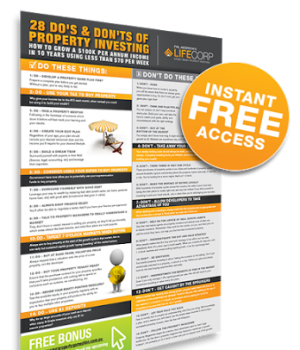I never thought Iʼd be telling someone in casual conversation that the internet has grown too big, until now.
But here it goes: Advertisers, the Internet has grown too big! And yes, thatʼs bad news for you if you havenʼt yet learned your way through the crowd.
Booking an effective media campaign should be easy when there are a huge amount of impressions available on the Internet. Major publishers like Fairfax, News Ltd. and ninemsn produce billions of impressions. And ad networks like AdConion, Drive, Admeld and AdKnowledge (amongst many others) are providing astronomical volumes of inventory (impressions) to the online advertising market.
This massive oversupply of impressions is driving down publisher earnings. As publishers have more and more unsold inventory, they are forced to adopt a performance model, where they are now flogging off inventory to any Joe who will take it and pay the highest effective cost per 1,000 impressions (eCPM) – whether this is on a cost per Click, Lead, Sale or Acquisition model.
While lower prices for the same inventory seems like a fantastic proposition for you as an advertiser, your online campaigns are becoming less and less effective as banners continue to be shown over and over to the same audience, or an audience that is not relevant to your brand and has no interest in purchasing worming tablets for a pet they don’t even have.
I recommend putting the performance publishers or networks you are using through their paces. Ask them if they offer any of the following to increase your campaign effectiveness and results.
- Automated Campaign Optimisation
Automated optimisation is run by the technology the performance group is using. This is usually based on Click through rates and conversion rates (how many people click on a banner ad or perform a certain action). - Profile Targeting
Is your network or performance product targeting known consumer profiles (obtained through reputable online databases) or having a guess at who people are by their online behaviour? If the latter, then you should have paid a slightly lower price and booked your campaign on a behavioural targeting product. - Behavioural Targeting
Networks and publishers will set certain criteria of targeting behaviour (i.e. if you visit more than three male-oriented sites, or visit the same site more than four times in a day). This type of behaviour then profiles you as interested in a certain type of product, or that you are most likely a male between the age of 18 and 34, etc. - Campaign re-targeting
Campaign re-targeting can be used effectively in two main ways. The first is specific to the banner ads that the user is seeing across any particular network; e.g. if I have seen banner A twice in one hour, I will now be served banner B. Re-targeting can also be used to re-message or re-target banner ads to a user who has either already landed on your page, or completed a certain stage of an application process. This can be effective in offering an additional discount to finish filling in the form they started and closed.
More important than asking ‘if’ is to find out how. Understand what drives their system and how it all works. Challenge your network or publisher; make sure they are using the method of targeting they have labelled rather than labelling a different type of targeting.
By using this knowledge to plan and run your campaigns, you should be increasing user response rates and running a more effective campaign.
Jonathan Despinidic started out in promotions and marketing before starting on as a performance media specialist at Ninemsn then moving to launch TPN AU. Jonathan’s latest appointment is as the Head of Technology at Digital Network Technology where he will head up the operations team and be at the forefront of leading product development. Image by zipckr (Pietro Zanarini)





![The Gaddie Pitch in three simple sentences with Antony Gaddie and James Tuckerman [CHEAT SHEET]](https://anthillonline.com/wp-content/uploads/2015/08/GADDIE-PITCH-updated-3D-cover--300x194.png)
![Instagram for Business… in 12 steps [FREE INFOGRAPHIC]](https://anthillonline.com/wp-content/uploads/2015/08/Capture7-100x75.jpg)
![The Top 5 Most Insanely Dumb Mistakes made by Rookie and Seasoned LinkedIn Users, with David Hobson [FREE REPORT]](https://anthillonline.com/wp-content/uploads/2015/07/Screen-Shot-2015-11-26-at-14.29.18-100x75.png)
![Four principles to creating dedicated customers…or zombie loyalists with Peter Shankman [Free report]](https://anthillonline.com/wp-content/uploads/2015/11/Screen-Shot-2015-11-26-at-11.16.26-100x75.png)
![Need more leads? Here are five strategies [FREE DOWNLOAD]](https://anthillonline.com/wp-content/uploads/2016/04/james-FIVE-SIMPLE-STRATEGIES-TO-GET-MORE-LEADS-01-06.pdf-Box-2016-05-13-15-49-32-100x75.png)
![Can a Mini Cooper predict the future more accurately than the Mayan prophecy? [VIDEO]](https://anthillonline.com/wp-content/uploads/2012/12/MiniCooperChickens-300x350.jpg)

![When did science get to be so damn sexy? [VIDEO]](https://anthillonline.com/wp-content/uploads/2012/08/NASAandWeKnowIt.jpg)
![Finch ‘a financial app for your social life’ has secured $2.25 million in seed funding just three months after launch [VIDEO]](https://anthillonline.com/wp-content/uploads/2017/11/finch_founders_product-300x350.png)
![How to make your own festive season video from your company [VIDEO]](https://anthillonline.com/wp-content/uploads/2013/12/ANthillXmas-300x350.jpg)
![How Master the Art of Sales Even if it Makes You Feel All Weird and Icky Inside with Phil Anderson [CHEAT SHEET]](https://anthillonline.com/wp-content/uploads/2015/08/PHIL-ANDERSON-COVER-300x194.png)
![The Ultimate Social Media Almanac with James Tuckerman [Cheat Sheet]](https://anthillonline.com/wp-content/uploads/2015/11/Screen-Shot-2015-11-26-at-11.24.55-100x75.png)
![How to secure lucrative sponsorships in five steps [CHEAT SHEET]](https://anthillonline.com/wp-content/uploads/2016/02/jackie-fast-meme-04-100x75.jpg)

![New Zealand’s Xero eyes US IPO, further disruption as subscribers increase [INFOGRAPHIC]](https://anthillonline.com/wp-content/uploads/2014/07/sruuuuujana-212x194.png)
![Ever wonder if your ‘content marketing’ is really just crap? You gotta see this! [INFOGRAPHIC]](https://anthillonline.com/wp-content/uploads/2014/08/content-100x75.jpg)
![7 Business Lessons From Game of Thrones [INFOGRAPHIC]](https://anthillonline.com/wp-content/uploads/2014/10/infographic-games-of-thrones-041-100x75.jpg)
![How to build your own Media Empire… In seven steps with Nathan Chan [INFOGRAPHIC]](https://anthillonline.com/wp-content/uploads/2014/10/Nathan-Chan-Infographic-e1413419529176-100x75.jpg)
![5 Business Lessons From Tinder [INFOGRAPHIC]](https://anthillonline.com/wp-content/uploads/2014/10/Tinder-Elegant-Infographic-100x75.jpg)



